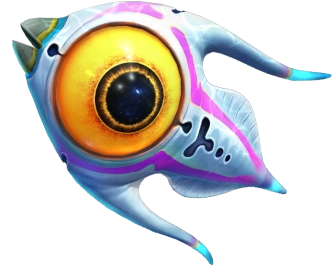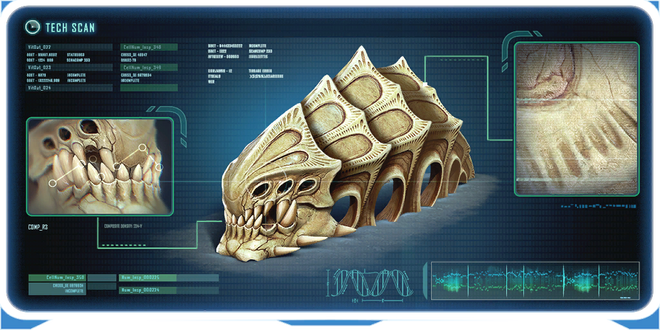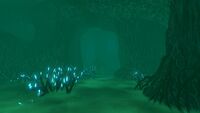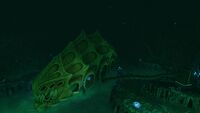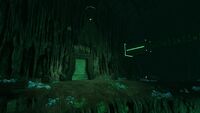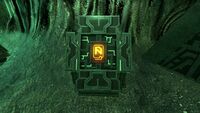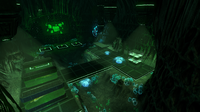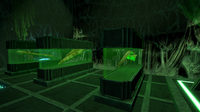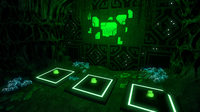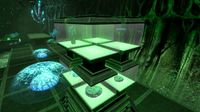The Laboratory Cache is found in the Ghost Canyon of the Lost River. It was set up to study the Ancient Skeleton and several other specimens within the Lost River. This Cache is unique in that it requires the Orange Tablet found in the Deep Grand Reef Degasi Base to unlock.
Inside the Alien Cache three containers with bone samples and three containers with local fauna samples can be found, there are various pieces of Precursor lab equipment scattered around as well as three Ion Cubes at the far end. A Cuddlefish Egg can be found on the workbench at the far right of the cave.
Crabsquids may be encountered in the cave.
Data Bank Entries
|
The skull of a million year old armored carnivore. Projections suggest this lifeform would have been larger than any living specimen encountered on the planet. The oceans of 4546B must have been very different to support lifeforms of this size, with more open geography and many more lifeforms in the leviathan range. |
|
These fossils likely came from an ancient ancestor of the leviathans which inhabit the planet today. |
|
This local fauna is being held in stasis. The aliens evidently sought an extensive knowledge of the planet's ecosystem. |
|
The large laboratory table and accompanying scanners incorporate technologies far beyond our current level of understanding. Hypotheses: - Equipment maintenance - Staff maintenance - Specimen analysis - Specimen gene manipulation |
|
The prominence and facing of these alien devices suggests they are some kind of probe or sensor. Their subject would seem to be the vast skeleton in the center of the cavern. The attached cable network may lead to a remote power station or data hub. Assessment: Investigate |
|
This terminal contains extensive alien research data on the local fauna, with a special focus on their reproductive methods. Core conclusions have been synthesized: - The aliens discovered just one sex on the planet Research appears to have been focused around hatching conditions and genetic variations between parent and child. |
Gallery
| Precursor objects in Subnautica | |
|---|---|
| Main bases | |
| Lesser structures | |
| Caches |
|
| Other | |
